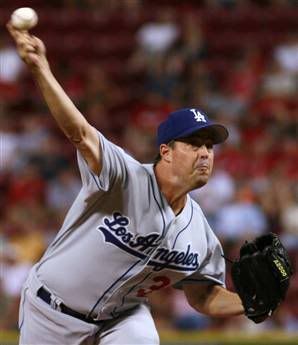quote:
Originally posted by thepainguy:
Near as I can tell, I think Tim Lincecum will generally be free of shoulder problems. I need to see how his fastball moves (e.g. glove-side or arm-side run) before I render a verdict on his elbow.
Chris, like I said before, you simply don't have enough experience throwing a baseball or teaching someone how to throw a baseball hard. I've tried to cut you some slack, but your advice based on your limited observations is bad advice.
Believe it or not, like redbird5 says, the majority of young kids, (especially the girls) who are new to throwing large objects like baseballs and softballs, release the ball with a cutter type spin on the ball due to the size of their hand and limited ability to have a firm grip on the ball with only two fingers behind the ball. Small hands typically have to use a five-finger grip. And out of the hand, the ball does not have backspin.
Two fingers behind the ball helps maintain backspin. Two fingers behind the ball laying parallel to a piece of tape wrapped around the ball, helps teach and maintain backspin. This is teaching to throw without supinating or pronating the arm before ball release.
I personally have to be careful how I grip a baseball. I must use a four seam grip to throw the ball straight. If I grip the ball with my fingers parallel to the seams and in the direction of the saddle loop, the ball will....with no exception....cut very late in an almost horizontal direction with backspin rotation. I can't begin to count the times I thought I was going to destroy another camera by gripping the ball this way.
It's absurd to think that glove side movement of the ball has to be intentional by supination, and that you rate someone’s arm durability on the movement of such throws. Glove side movement can have absolutely nothing to do with supinating to cut the throw, or early pronation (before ball release) to run the throw. Fingers can be behind the ball, and these movements can be solely dependent on the grip; finger pressure and finger position on the ball at ball release.








